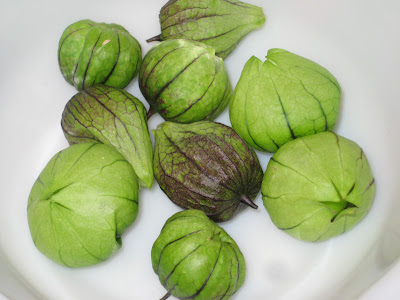 |
| Cuttings of phlox and lavender (right) |
The lavender plant has been flowering since July, but the flowers are beginning to dry out and it's time to tidy it up. I started cutting back the flower stems this morning: the stems are very long, and you cut them just at the point where there's a cluster of leaves (if you cut into old wood the plant won't produce new leaves; no hard pruning for lavenders!). You can keep the dry flowers for cooking and to make lavender bags (I'm keeping mine). But I also took some cuttings to reproduce the plant for next year, and these cuttings are different from pruning: for propagation, you're looking for a bit that has grown this year, so it's semi-soft, but hasn't produced flowers.
This bit will be growing off an older branch of harder wood. I've seen Carol Klein do this on TV and rather than cutting she tears them gently so that there's a tiny bit of the bark in the older branch attached at the base of your cutting. This is called a heel. It's difficult to explain, but I guess that if you try taking your twig with your fingers instead of using scissors you'll end up with a bit of heel even if you don't try. Lavender cuttings are more likely to produce new roots if they've got a heel, apparently.
The only other trick is to get rid of the softer top of your twig, and most of the leaves (including all the lower leaves that would get buried anyway). The reason you do this is because plants lose a lot of moisture through their leaves, especially the softer leaves, and you don't want your cutting to dry out before it produces roots. New roots first, and it'll produce new leaves later. Another thing I do to stop the compost from drying too much is cover the pot with a plastic bag or half-bottle of juice for the first month or so.
If you look at the phlox cuttings that I took about a month ago, on the left of the photo, you can see that one of them has produced new leaves already. The other one only has the two leaves I left when I took the cutting, but they're still looking healthy so it looks like it's not dead (it would have rotted by now if it hadn't produced new roots).
Esta manana estuve podando la lavanda, que ya han empezado a secarse las flores. Con la lavanda hay que tener cuidado de no podar demasiado, pues si llegas a la parte mas seca y mas vieja de la planta ya no produce ramas nuevas. Aproveche la ocasion para cortar esquejes tambien, para el ano que viene. Los esquejes de lavanda que se cortan en esta epoca del ano son ramitas que crecieron en primavera, pero que ahora ya estan un poco mas maduras. Yo las corto de unos 8 cm de largo (mas o menos).
Hay un truco que he visto en la tele para esquejes de lavanda que consiste en arrancar la ramita con cuidado y dejando en la base un pelin de corteza de la rama mas antigua. Es dificil de explicar, pero seguramente si arrancas la ramita en vez de cortarla con tijeras ya te sale con la base de corteza (es como un pie minusculo), aunque no lo intentes.
El otro truco es quitar todas las hojas, excepto tres o cuatro en la parte de arriba, y tambien arrancar la punta de la rama donde estan las hojas mas blandas. Esto se hace para evitar que el esqueje se seque antes de tener tiempo de producir raices. Las plantas pierden un monton de humedad a traves de las hojas, y cuanto mas blanda sea la hoja mas humedad necesita. Para mantener el compost humedo yo tambien cubro la maceta con una bolsa de plastico transparente o una botella de refresco cortada durante 4-6 semanas.
En la foto a la izquierda veis unos esquejes de phlox (pincha para ver que planta es) que corte hace un mes o asi. Uno de ellos ya ha echado hojas nuevas! El otro tiene buena pinta, las hojas parecen sanas, lo cual indica que tambien tiene raices nuevas (si no las hojas ya se hubieran muerto).






